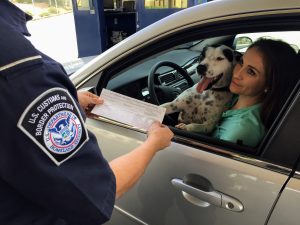Are you in the U.S. and hoping to bring family members from another country to live here too? A relative of a U.S. citizen or permanent resident will usually find it easier to move to the U.S. than someone with no relatives here.
Whether you’re a citizen or a legal permanent resident has an effect on the relatives you’ll be able to petition to bring to the U.S. There are two visa categories, immediate relatives and family preference. This is how eligibility works:
There are unlimited immediate relative family visas available for people in these categories:
– Spouse of a U.S. citizen.
– Unmarried minor child of a U.S. citizen.
– Orphan who has been or is being adopted by a U.S. citizen.
– Parent of a U.S. citizen who is at least 21 years old.
The second category is the family preference visas. Only a limited number of people are permitted to enter the U.S. each year in each of these categories. There are four classifications within this category:
Family first preference
This includes adult unmarried children of U.S. citizens and their children. The wait in this category is currently about seven years.
Family second preference
This category is for family of legal permanent residents. Spouses, minor children, and unmarried children over the age of 21 are all in this category. The average wait is 2-4 years for spouses and minor children, and eight years or more for adult children.
Family third preference
This category is for married children of U.S. citizens. The average wait is ten years.
Family fourth preference
This category is for brothers and sisters of U.S. citizens. Currently the average wait is 10-15 years.
The wait times for beneficiaries born in India, Mexico, and the Philippines—countries from which there is a lot of demand for visas—may be significantly longer.
In order to sponsor a relative, the first step is to file a petition with the U.S. Citizenship and Immigration Services (USCIS). Following approval, the petition is sent to the National Visa Center (NVC). The date of the petition was filed with USCIS becomes the priority date, which determines the beneficiary’s place on the visa waiting list. When the applicant’s priority date becomes current (i.e., available), the petitioner and beneficiary will be asked to pay the appropriate fees, after which the petitioner and beneficiary will submit various documents, including the Affidavit of Support. Next, an interview will be scheduled at a U.S. Consulate outside the United States. Depending on the circumstances, the beneficiary may also be eligible to apply for adjustment of status (instead of consular processing) in the U.S.
A U.S. citizen who wants to sponsor siblings or parents must be at least 21 years old. There’s no age limit for other categories, but a sponsor must be at least 18 years of age and a resident of the U.S. in order to sign the required Affidavit of Support.
Immigration is an extremely complex process, and we highly recommend that you seek assistance from a qualified immigration attorney. If you’d like to learn more, or if you’d like help with this process, please give us a call today at 305-448-0077.







